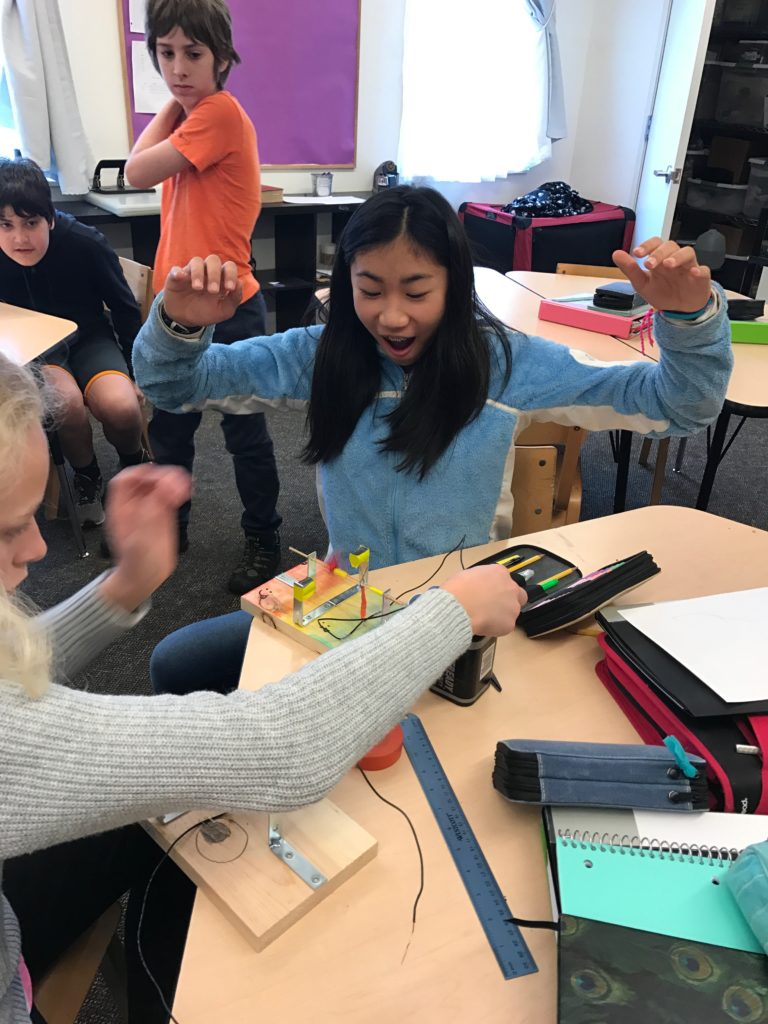There’s no doubt that middle schoolers thrive when social interaction is a big part of their learning. They’re truly in their element and most engaged with their learning when they’re doing it in a social setting.
I can think of so many times with my last class when I presented the class with a challenge, matched them up in groups, and let them start figuring things out. The productive hum that fell over the class told me that there was some good working and thinking going on.
Most teachers have some of those positive experiences of middle school group work and many of us are looking for ways to create that happy, social, and hard-working environment in our classrooms.

Unfortunately, we also have those experiences when group work didn’t quite work out. Because as great as social group work is, it can go horribly awry, as well. There are some pretty big challenges to overcome when creating a healthy group work environment. Let’s talk about some of those challenges and how the teacher can face them.
Are you up for it?
As satisfying as a group learning experience can be, it takes work to manage. And it’s loud. And, honestly, sometimes I just don’t have the patience for it.
And you know what? That’s okay! Far better for me to be honest with myself about my patience level and save the group activity for another day, than to set some great activity in motion, only to find myself annoyed and grumpy with my students (who are just doing what I asked them to do.)
I’ve definitely had days when I didn’t ask myself this question before getting rolling with the activity and I had to pep talk myself through it. I’ll find myself getting irritated with the noise and feeling ready to pump the brakes and tell everyone to just be quiet. When I have the wherewithal to do it, I try to stop myself and look around. Invariably, everyone is engaged and working productively. They’re just making a lot of noise while they do it. I try to take a deep breath and let it go.
Is everyone learning?
This was a big hangup for me for a long time. I mean, if they’re working in small groups, how do I know that everyone in the group really gets it? There are bound to be some kids who will happily sit back and let others do most of the work.
I worry about this most when we’re working on a hard skill — like a math concept. Everyone is responsible for understanding the concept, and it’s my job to make sure they do.
But having all students participate in the group is important no matter what the project is. The last thing I want is for one of my students to come away with the understanding that it’s just fine to sit back and let others do the hard work while they relax.
For awhile I rationalized it by thinking that the positive experiences they were getting by working together out-weighed the potential for missing out on that individual skill-building. I’m no longer so satisfied with this, though. Instead, I’m thinking that it IS possible for students to be individually responsible AND work in a group.
This is the question I’m currently grappling with as I put together a possible group project for my fifth graders. They’re a little young to be able to handle the responsibility of making sure they all participate equally, so I’m thinking about what kind of structure I can build into the project to make sure everyone participates.
I’m thinking I could have defined roles with clearly structured tasks. I know that this might frustrate some kids, who would be more than happy to complete all of the tasks themselves, so I guess it’s a good learning experience all around.
How much are we working and how much are we socializing?
When I was a new teacher, I remember getting my students ready for a group project and at the mere mention of the word “group” they were already looking at each other like, “Woohoo! Par-tay!” I hadn’t learned the importance of setting them up for success and making sure that those group project times were WORKING times. They just couldn’t help themselves and they got carried away with the social aspect of the experience.
In those days, when I stopped to look around to check that everyone was working, they definitely weren’t! And I didn’t really know what to do about it. (Oh how grateful I am to have some experience under my belt!)
Now, as I prepare my current students for their first real group project (possibly, this is still in the planning stage) I’m thinking about the ways I can build in checkpoints so I can be sure that they’re striking a good balance between socializing and working.
- We’ll start with a short group work session and build up to longer periods over time.
- At the end of each session, each group and each individual student will reflect and share what they accomplished.
- We’re starting when they’re young enough that pleasing the teacher and following instructions still wins out over having fun with classmates.
I’m hoping that by starting out with these things in mind, my students will establish some good habits about group work and we’ll have many successful years of group projects ahead of us.
Are you teaching middle school? You might consider checking out some of my curriculum guides. Many of them include instructions for projects that can be done in small groups, including my 6th/7th Grade Astronomy Guide and 8th Grade Physics and Meteorology.




[…] like those at the Blk & Lit Candle Bar and the R&H Escape Room are great for group activities Waldorf, team building Waldorf, and Waldorf experiential entertainment. They help teams work together and […]